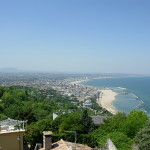Beyond Stone Henge: Visit Britain’s Lesser Known Megaliths
When people think of stone circles, the first site that most probably comes to mind is Stone Henge. However, Stone Henge is not the only stone circle (or megaliths as they are also known) located in the British Isles.
If you like Stone Henge then you may also find the following sites of interest:
Avebury Ring, Wiltshire
This stone circle, located west of Marlborough in the county of Wiltshire, was perhaps made even more famous by the 1970’s TV programme ‘Children of The Stones’. Since then it has become a mecca for history enthusiasts and Druids alike. Although it is the largest known stone circle in the world, the site is actually made up of circles within circles which distinguishes it from other megaliths. The larger outer earth bank is a massive 427m in diameter. In the centre of the larger stone circle are two smaller stone circles. Of the 154 original stones, 36 are still in place.
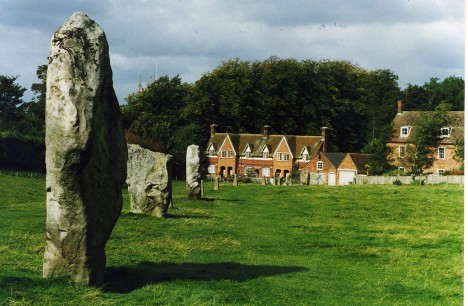
Avebury Rings, Wiltshire, England, UK by Phillip Capper
This stone circle (or collection of) is estimated to have been constructed anywhere between 2600 and 3000 BC and, like many, is thought to have been built for ceremonial purposes. However, the reason for its construction still remains unclear even to this day.
Knocknarea and Carrowmore, North West Coast of Ireland
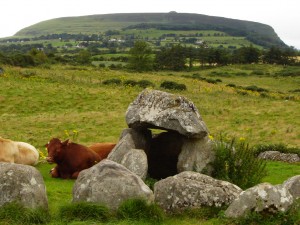 For the more intrepid traveler, Knocknarea Cairn near Sligo, which dates back to around 3000 BC may be of interest. Although the stone circle here is small, it is none the less intriguing for it. Once you have climbed the main cairn you will find the final resting place of Maeve, queen of Connacht, known as Maeve’s Cairn. About 150 metres north of the cairn one can locate a small passage tomb. It is between this and the cairn that you can find the remains of a stone circle.
For the more intrepid traveler, Knocknarea Cairn near Sligo, which dates back to around 3000 BC may be of interest. Although the stone circle here is small, it is none the less intriguing for it. Once you have climbed the main cairn you will find the final resting place of Maeve, queen of Connacht, known as Maeve’s Cairn. About 150 metres north of the cairn one can locate a small passage tomb. It is between this and the cairn that you can find the remains of a stone circle.
The impressive Carrowmore lies about a mile east of Knocknarea and is the largest megalithic stone cemetery in Ireland. These Dolmens, approximately 65 in total cover an area of one and a half square miles. A small cottage in the village of Carromore acts as a point of information and visitor centre.
Photo of Knocknarea, Ireland by Rowan of Ravara
Swinside (Sunkenkirk) Stone Circle, Cumbria
This charming stone circle, 28.7 m in diameter, is located in a peaceful location below Black Coombe in Cumbria and has many of its stones still standing. It is a curiosity that the stones that have fallen down, have fallen inward. The stones themselves form almost a perfect circle and legend has it that you cannot count the stones. Furthermore it is claimed that the ancients tried to erect a church in this location, but of an evening the devil would come along and pull down the stones. Also known as ‘Sunkerkirk’ which means that the devil sunk the stones.
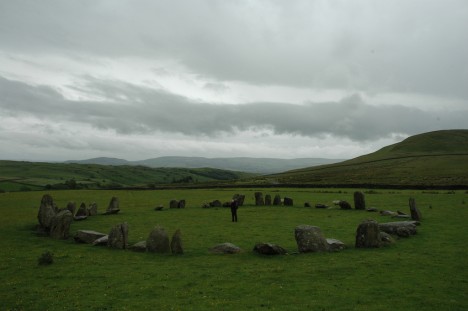
Swinside, Cumbria by Jocelyn
Machrie Moor, Isle of Arran
The standing stones of Machrie Moor,located on the west of the Isle of Arran, are thought to have been constructed toward the end of the Neolithic period. There are six stone circles here which are all located within walking distance of the other. Therefore, these monuments are viewed as one site as opposed to six separate ones.
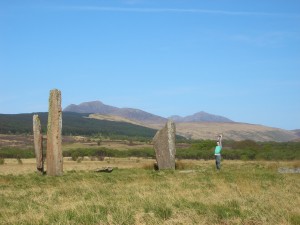 What is interesting is that there is evidence that timber circles were originally in place where the stone circles are now located. Clearly this was a site of great significant importance to the ancients.
What is interesting is that there is evidence that timber circles were originally in place where the stone circles are now located. Clearly this was a site of great significant importance to the ancients.
Again, it is not known why these stones were erected, but it is safe to assume that they were for some form of ceremonial purpose.
Photo of Machrie Moor, Isle of Arran by Saskia Heijltjes
Moel ty Uchaf, Corwen, Wales
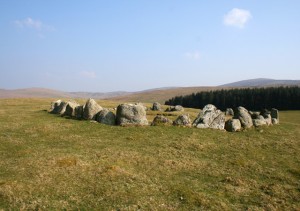 This stone circle made up of approximately 40 stones in North Wales is located on top of a hill in Denbighshire. ‘Moel ty Uchaf’ means ‘the High Bare Hill’ and the steep walk to reach the stone circle bears witness to its name. Many visitors come to Moel ty Uchaf to meditate and take in the beauty of the area, and many claim that it has healing powers. A favourite with healers and walkers alike, this small circle which is off the beaten track boasts stunning panoramic views in a spectacular setting. The circle itself is small, measuring only 11 metres across, and appears to consist of a burial cist in the centre along with a possible opening or entrance to the south east.
This stone circle made up of approximately 40 stones in North Wales is located on top of a hill in Denbighshire. ‘Moel ty Uchaf’ means ‘the High Bare Hill’ and the steep walk to reach the stone circle bears witness to its name. Many visitors come to Moel ty Uchaf to meditate and take in the beauty of the area, and many claim that it has healing powers. A favourite with healers and walkers alike, this small circle which is off the beaten track boasts stunning panoramic views in a spectacular setting. The circle itself is small, measuring only 11 metres across, and appears to consist of a burial cist in the centre along with a possible opening or entrance to the south east.
Photo of Moel Ty Uchaf, Corwen, Wales by Espresso Addict
Will Kerr writes on a wide range of travel topics, from the world’s most under-rated attractions, to more mundane issues such as car hire.










